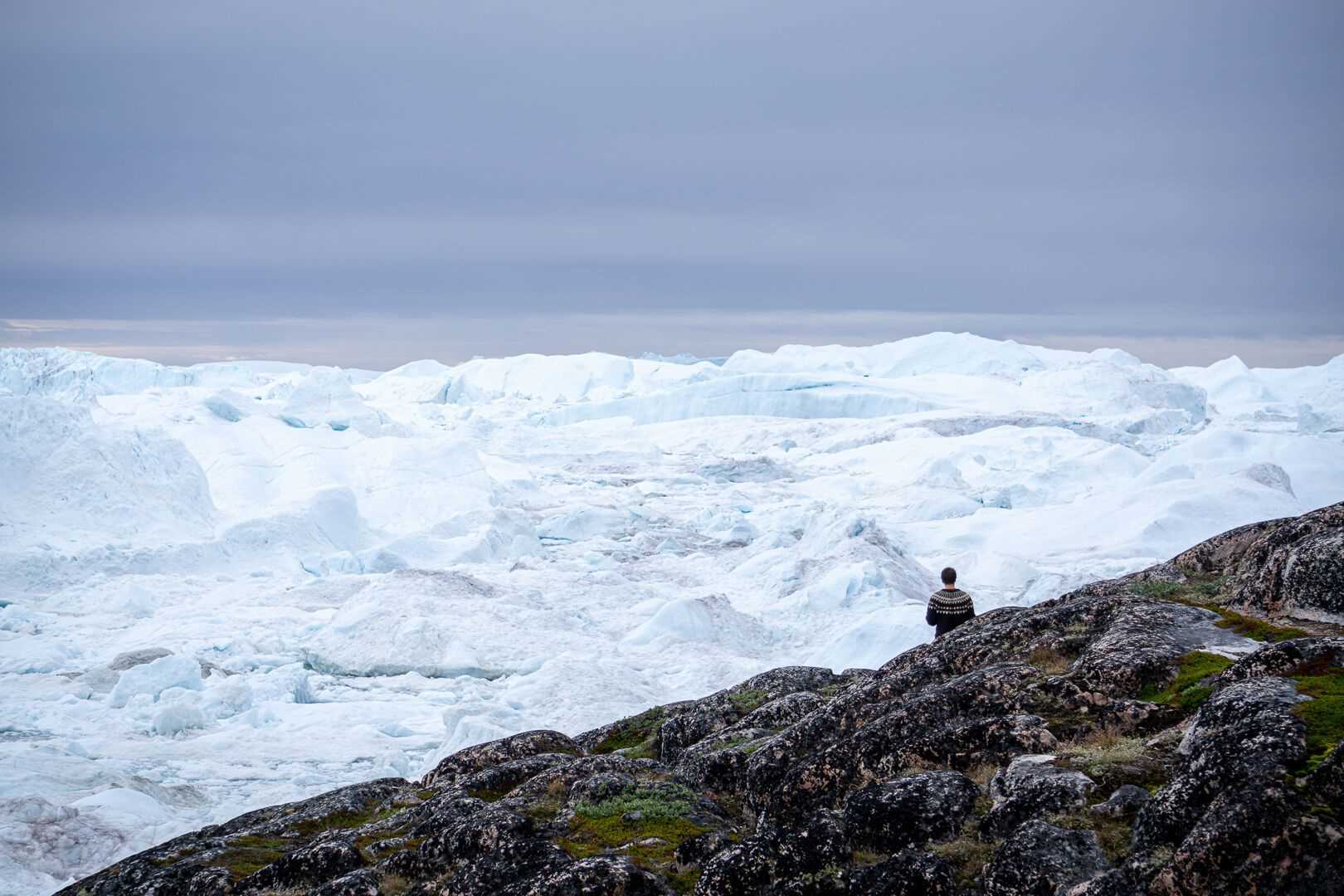Ilulissat is the Inuit word for icebergs. The fjord near the city is filled with gigantic icebergs, which come from the most productive glacier in the Northern Hemisphere.
CallTest +1.800.397.3348
CallTest +1.800.397.3348

View all info
Ilulissat is the Inuit word for icebergs. The fjord near the city is filled with gigantic icebergs, which come from the most productive glacier in the Northern Hemisphere.
Born in Chile and raised in Argentina, Alex spent his childhood living in different parts of these countries and getting to know the local cultures.
Read MoreShare Report
8/15/2022
Read
National Geographic Explorer
The first half of the day was spent sailing through Greenland’s wonderful waters. Even though there were no operations during the first half of the day, there was nothing lacking. Our wonderful underwater specialist, Amy Malkoski, gave a very informative talk called Plastic Planet, which gave us information about plastics in our oceans. Shortly after, our scientist aboard, Dzmitry Lukashanets, gave us an incredible talk about microfauna, called Hidden Life on Earth’s Edge. Our afternoon was a real expedition afternoon. National Geographic Explorer anchored in Ataneq Fjord, and the guests went ashore. Even though a few mosquitos greeted them, it did not stop anyone! Everyone went off to do their own activities. Carlos Navarro and Sisse Brimberg, our National Geographic photographer, led a photographic walk. Others joined our wonderful naturalists for different adventures. Our day in Ataneq Fjord marks the end of our wonderful trip. It has been fourteen incredible days that have blessed us with good weather and great times. The Captain’s Cocktail Party was held, and our wonderful Captain gave his speech, and even though it was fantastic, it always carries some sadness because it means that the trip has come to its end.
8/14/2022
Read
National Geographic Explorer
After sailing overnight to our northernmost destination at 70 degrees north, we awoke to the stunningly charming town of Uummannaq. With only about 1,400 residents, this town is still the eighth largest town in all of Greenland. The colorful homes are dwarfed by the monolithic mountain of the same name that shoots up almost 4,000 feet above the town. While floating along the shores of Uummannaq, many of us piled on layers of clothing and headed out to the outer decks to enjoy the soaring fulmars, gulls, and guillemots in the area. More than anything, we were in awe of the massive icebergs floating by in close proximity to both the town and our ship. Their size, textures, infinite shades of blues, and even the sounds they projected were all mesmerizing to each of us. Soon after, we warmed up inside the ship while enjoying a talk by Sisse Brimberg, our National Geographic photographer. During her engaging talk, she shared stories and images of what it is like to be on assignment as a professional photographer. Our afternoon adventure provided a fascinating journey into Greenland’s past. A few days ago, we visited the National Museum of Greenland in the capital of Nuuk. One of the exhibits displayed several well-preserved mummies from over 500 years ago. Today we were able to launch Zodiacs, land at a rocky beach, and hike to the actual site where these mummies were discovered in 1972. Although we will never know the whole story of the women and children preserved at this site, the care with which they were preserved and adorned speaks volumes about the emotional connections people shared. During and after dinner, we continued to sail south with anticipation for tomorrow, our last full day on this big, beautiful green island!
8/13/2022
Read
National Geographic Explorer
It is early morning with bright skies and a bit of wind. We are at Qeqertarsuaq, or the Large Island, the largest of Greenland’s nearshore islands. The island is better known as Disco Island to the rest of the world. The name comes from the Danish Diskoøen, meaning Disco Island since the island is shaped like a disk! A few large icebergs hang about, and the land looks both verdant and barren. There is less than a quarter mile of plain before a bluff is reached, its walls cut by cascades and waterfalls. The plain undulates slightly. The peaks are mostly covered with moss and lichens, and the valleys are blanketed with dwarf willows and birch. The scenery here is extraordinary! Swaths of cobbles collected by the ice are populated by rootless moss and lichens of various types and colors, and to the side we spot a Lilliputian forest of wood and herbs. We are in the Arctic, where the ice rules. Much of the land is covered in ice, and all of the earth is embedded in ice, or permafrost. Permafrost can move the rocks and collect them in one place. It can cause the land to slump when the wet, thin layer of summer-thawed earth slides over the permafrost below. You can see permafrost on the slopes. It looks like poorly solidified gelatin on a tilted tray. Every summer, the top of the permafrost (what we walk on) thaws. This is the active zone, where plant roots live. The land is unstable but certainly not unnatural. It is easily cleaved by water, creating canyons, cascades, and waterfalls. As we walk, we see the tracks of fox, reindeer, and geese. It is a wild place. In the afternoon, we take to the Zodiacs and explore a sea with sculptures of ice. Some are dirty, some clear. Some small, some huge. All are beautiful, and I might say magical. Today is another day, as new and wonderful as any day can be. Photo caption and photographer: Disco Island. Photo by Dennis Cornejo